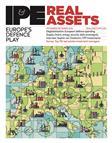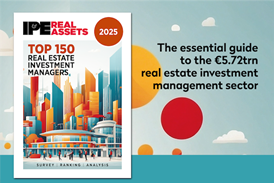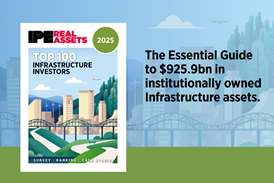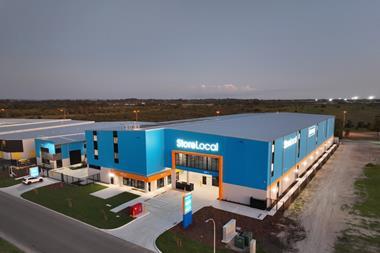While climate risks are reshaping how the real estate industry assesses investments, the essential role of insurance in mitigating these risks is often overlooked, writes Sarah Belkhir
As Europe emerges from a mega ‘heat dome’, with temperatures soaring above 40°C – with what is believed to be the hottest ever June recorded - there is no better time to reflect on the impact of climate risks on the real estate sector.

Climate risks are fundamentally reshaping how the industry assesses investments and manages properties. However, despite its critical importance, the question of how to insure against these risks often flies under the radar.
Whilst some sectors, such as timber waste, chemicals, and industrials, are becoming nearly impossible to insure, real estate remains insurable for now. Yet, the landscape is changing rapidly, making it increasingly challenging to obtain insurance for assets exposed to major climate events. The ramifications of this trend are just beginning to be felt.
Insurance rates and costs have already started to climb, and this is only the beginning. Deductibles and premiums are on the rise, and there is even evidence that the natural disaster tax in France may increase from 20% to 30% by 2030, according to the Caisse Centrale de Réassurance.
In various markets across Europe, it is now difficult or incredibly expensive to cover certain guarantees against natural events. In France, for instance, there may come a time when insuring buildings in specific regions, particularly coastal areas threatened by sea erosion, becomes unaffordable.
The increasing frequency of climate disasters and damage creates vulnerabilities for insurance companies, increasing the likelihood of payouts and potentially jeopardising the viability of insuring certain buildings.
In the face of national climate disasters, governments may lack the financial capacity to continuously support and compensate for losses. Central banks are acutely aware of the potential contagion that could spread to the broader economy if the insurance industry were to face a crisis, particularly concerning bank’s willingness to lend against specific assets.
The reinsurance market was the first to sound the alarm about the impacts of climate change on real estate insurance. Our research team has been examining this issue for some time, including an analysis of climate risk scores from one of the leading reinsurance companies.
The findings indicate that rising insurance costs combined with adaptation costs required to protect buildings against physical climate hazards, like flooding, might be even more material than the retrofit budget required to decarbonise assets.
Combined, these adaptation and retrofit costs could likely render many real estate assets in the market ‘stranded’, especially for older buildings in weaker locations that are unable to attract enough rent to justify sufficient capital investment.
Most insurers and reinsurers now employ experts and have started to organise their teams to directly tackle and advise on climate change, and these considerations have become increasingly paramount in risk assessments for their contracts.
Based on conversations with insurers, we understand the demand for professionals with the right knowledge of climate risk is high and growing, and they need more resources.
In response to the growing risk of climate events, governments in France, the UK, and Spain rely on natural disaster insurance pools to support the insurance market when major losses occur.
While some of these mechanisms have existed for decades, such as the French CatNat organisation and the Spanish Consorcio, their importance has grown significantly in today’s context of more frequent and severe natural events.
So, how is the real estate insurance market evolving?
Firstly, the focus on natural disaster prevention has increased significantly compared to a decade ago. In the real estate market, insurers are collaborating with clients to develop business continuity plans in the event of a flood disaster, for example.
This proactive and preventative approach, which requires concrete actions from asset owners, is becoming the expected standard across the industry. It is also now common practice to submit details of planned acquisitions to an insurance broker for risk assessment, including rigorous location analysis, before finalising contracts.
At AEW in Europe we factor in climate risk assessments in our due diligence process to ensure we can adapt the building as part of our asset management plans, thereby reducing future risks and insurance costs.
Secondly, new mechanisms for insuring properties are becoming increasingly prevalent, most notably parametric insurance. In this model, rather than accepting higher deductibles or paying increased premiums, a client and insurer agree on specific contractual limits or triggers that must be met before a policy comes into effect.
For example, a property owner might stipulate that in the event of a significant hailstorm, they expect the insurance company to pay out. This approach benefits both parties by establishing clear agreements around specific risks, allowing for better management.
Thirdly, collaboration and transparency are now more crucial than ever. The insurance industry is working more closely with real estate owners to provide solutions that help prevent or mitigate climate risks, such as flooding. This collaborative effort enables owners to better protect their buildings while allowing insurers to take proactive steps to safeguard their loss history – a true win-win situation.
An insurance provider should be available when needed, but open and collaborative communication from the outset is essential to building a strong partnership.
At AEW in Europe, we have worked closely with our insurance partners for over a decade, resulting in their deep understanding of our portfolio and requirements. This understanding is critical to our ability to safeguard our assets and the interests of our clients.
This challenge will only intensify. Our industry must remain innovative, collaborative, and proactive to effectively mitigate and insure against climate change.
To read the latest IPE Real Assets magazine click here.

